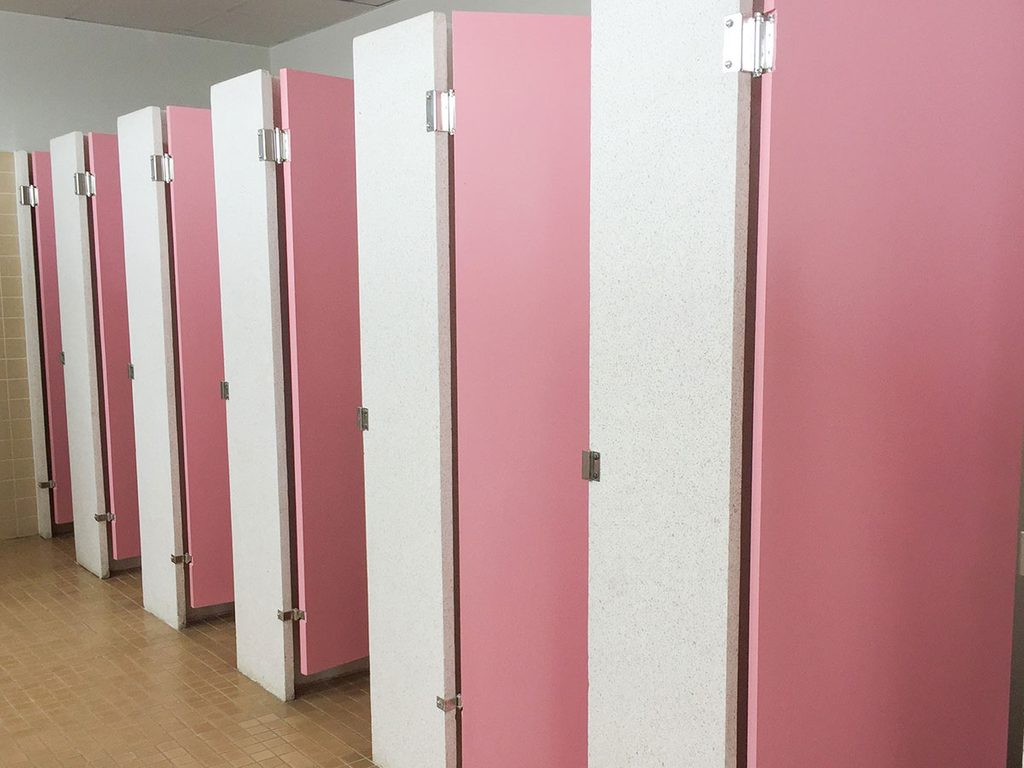This Is the Only Stall You Should Use in a Public Bathroom

Which is the cleanest stall in a public bathroom? Science has finally figured it out, so you don't have to.
When faced with a choice, which stall do you select in a public bathroom? Typically, you’d enter any of the ones that appear reasonably clean and hope for the best, right? But what if you could take the guessing game out of this dire dilemma?
When it comes to public restrooms, there’s a prevailing idea that you should avoid the middle stalls if possible and instead choose the first stall. The thought is that it’s the least used, meaning it’s the only one you should be using because it’s likely to be the cleanest.
“It’s true that if you take a survey—and there are a couple that have been done, people tend to (subconsciously or not) go to the stalls that are in the more sequestered section of the bathroom, and avoid those up front ,” says Philip Tierno, PhD, clinical professor in the department of pathology with NYU Langone Health in New York City.
(Also, do you know the most germ-infested things you touch every single day?)
Studying stall use
One study back in 1995 in Psychological Science examined this—and perhaps kicked off the fascination with what bathroom stall to choose. Psychologist Nicholas Christenfeld tracked how often the toilet paper was changed in each of four stalls for 10 weeks. His results: While 60 percent of finished rolls came from the middle stalls, only 40 percent came from those at the ends. That indicates that far more people used the stalls in the middle than random probability might anticipate.
A survey from New York Magazine took the analysis a step further by analyzing the preferences of men and women. A majority of both men and women prefer the middle stall, but since the stalls and urinals in the line are “rarely truly identical,” men then show a preference for whatever is closest to the door while women go to what’s furthest away.
Still, just because fewer people use an end stall, that doesn’t necessarily mean it’s cleaner. Some viruses need very few cells to cause an infection. For instance, norovirus needs just one cell to make you ill. That’s not to scare you, but to give you the heads up that “just because a stall looks clean doesn’t mean it is,” says Tierno. Same goes for just because you choose the first stall, doesn’t mean it’s clean either. “It’s not as simple or straightforward as it sounds,” he says. (Psst: Learn the toilet mistakes you didn’t even know you were making.)
That’s why practicing smart public restroom hygiene habits is so important. Here’s what Tierno does: he carries his own towelettes. He washes his hands at the sink (this is a must–whether you pressed the flusher or not, you just contaminated your hands by touching the door and latch), then dries his hands with the towel, and uses the towel to shut off the sink. After, he uses the towel to open the door and drops the towel outside. (Ideally, in a wastebasket.) That’s the best way to protect yourself from germs.
Next, learn the importance of toilet seat covers.
Medically reviewed by Tia Jackson-Bey, MD.




